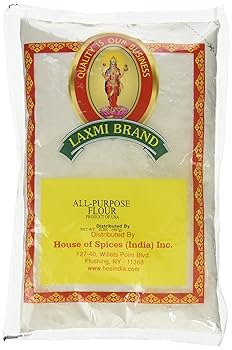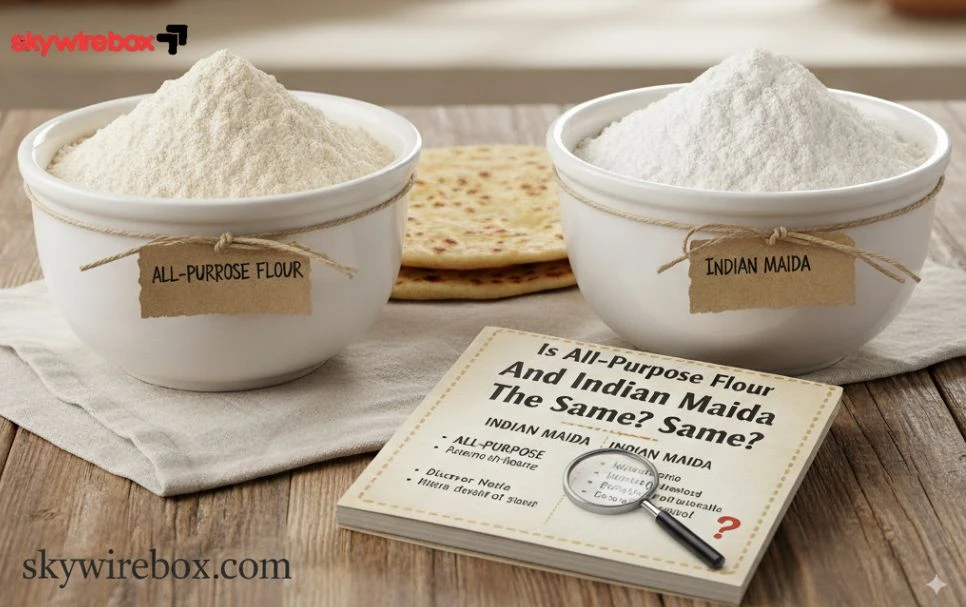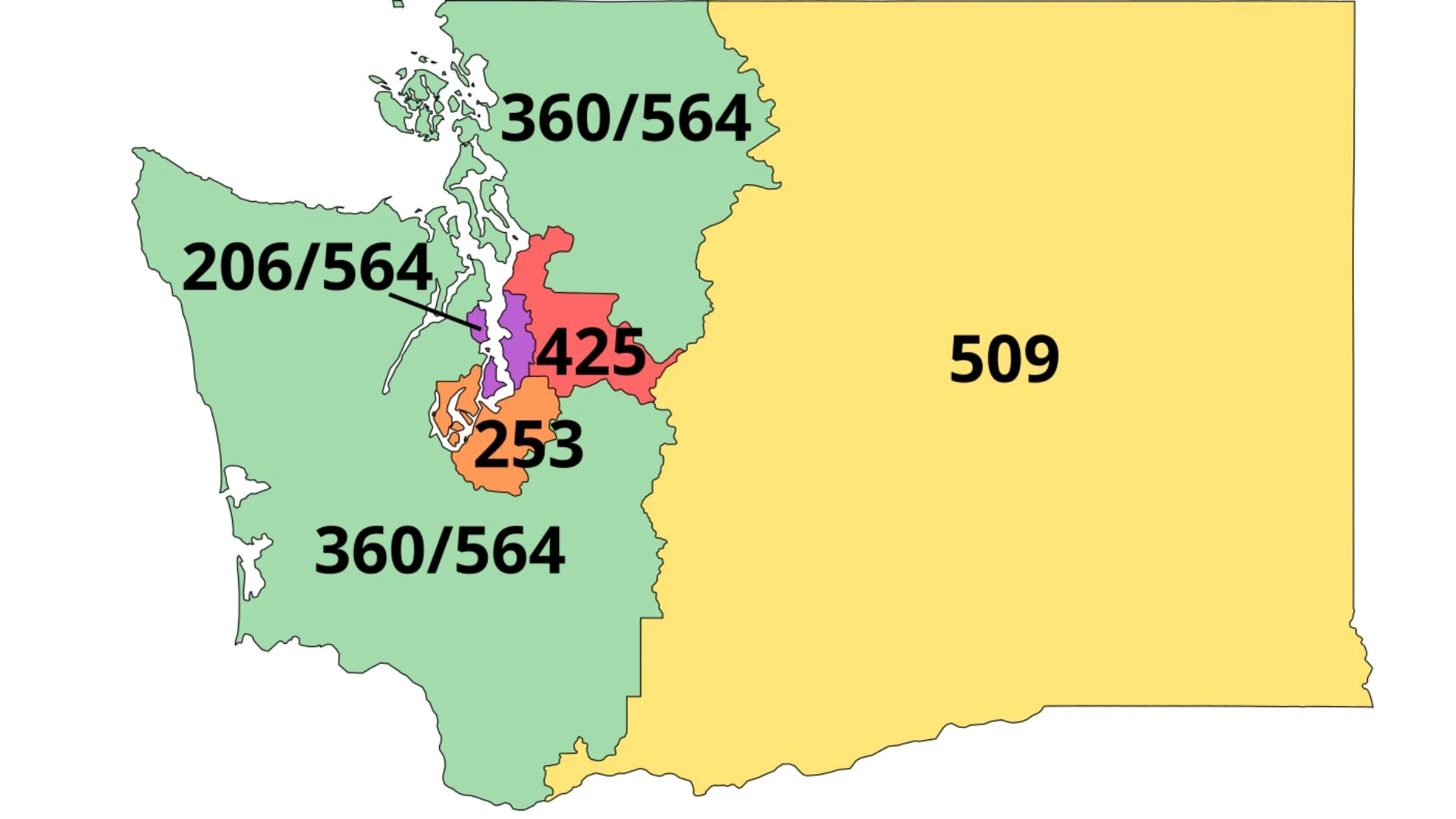Have you ever wondered if all-purpose flour and Indian maida are actually the same thing? If you’re someone who loves baking or cooking, this question might have crossed your mind more than once.
Knowing the difference or the similarity between these two can change how you prepare your favorite recipes. You’ll discover the truth behind these flours, how they affect your dishes, and which one you should be reaching for in your kitchen. Keep reading, because what you learn here might just improve your cooking game in ways you didn’t expect.
All-purpose Flour Basics
All-purpose flour is a staple ingredient in many kitchens worldwide. It plays a vital role in baking and cooking. Understanding its basics helps in knowing how it differs from Indian maida.
Origin And Production
All-purpose flour comes from wheat grains. Producers grind wheat to remove bran and germ. This process leaves mostly the starchy part called endosperm. The flour is then sifted to achieve a fine texture. It is called “all-purpose” because it suits many recipes.
Common Uses
People use all-purpose flour for bread, cakes, and cookies. It works well for thickening sauces and making batter. Its moderate protein level gives good texture to baked goods. This flour adapts to most cooking needs easily.
Nutritional Profile
All-purpose flour contains carbohydrates, some protein, and little fat. It also has small amounts of vitamins and minerals. Some brands enrich it with iron and B vitamins. It lacks fiber since bran is removed during milling.
Indian Maida Explained
Indian Maida is a type of refined wheat flour. It is a common ingredient in many Indian recipes. Maida looks very white and smooth. It is finer than regular wheat flour. The flour is soft and easy to mix.
Many people wonder if Maida is the same as all-purpose flour. Both are refined, but there are small differences. Understanding Maida helps in choosing the right flour for cooking.
Processing Techniques
Maida is made by milling wheat grains. The outer bran and germ are removed. This leaves only the starchy part of the grain. The wheat is then ground very finely. This process gives Maida its smooth texture. It also removes fiber and nutrients from the grain.
Typical Applications
Maida is used in many Indian foods. It makes soft breads like naan and paratha. It is also used in sweets and pastries. Indian snacks like samosas and pakoras often use Maida. Its fine texture helps in making dough soft and stretchy. It is popular for deep-fried foods because it crisps well.
Nutritional Content
Maida is mostly starch and carbohydrates. It has very little fiber or vitamins. The refining process removes most nutrients. It contains some protein but less than whole wheat flour. Maida is low in fat. It is high in calories due to the starch content. It is best eaten in moderation for a balanced diet.
Key Differences Between Ap Flour And Maida
All-purpose flour and Indian maida often seem the same but have clear differences. These differences affect cooking and baking results. Understanding them helps in choosing the right flour for your recipe. Below are key points that separate all-purpose flour from maida.
Texture And Appearance
Maida is very fine and soft in texture. It looks pure white and smooth. All-purpose flour has a slightly coarser feel. Its color is off-white, not as bright as maida. This difference affects the final dish’s texture.
Protein Content
Protein levels in all-purpose flour vary from 10% to 12%. Maida usually has a lower protein content, around 8% to 10%. Lower protein means less gluten. This makes maida better for soft, tender foods like pastries.
Bleaching And Refinement
Maida is heavily bleached and refined. It removes bran and germ completely. All-purpose flour may be bleached or unbleached. It keeps some nutrients that maida loses. This impacts flavor and nutrition.
Gluten Formation
Gluten forms when flour mixes with water and is kneaded. Higher protein in all-purpose flour creates more gluten. Maida forms less gluten, resulting in softer dough. This changes how dough behaves and bakes.
Impact On Cooking And Baking
The choice between all-purpose flour and Indian maida affects cooking and baking results. Each type behaves differently in recipes. Understanding these differences helps in making better food. Texture, taste, and rise can change with the flour type. This impacts bread, pastries, and traditional Indian dishes.
Suitability For Bread And Pastries
All-purpose flour suits bread and pastries well. It contains moderate protein, giving good gluten strength. This creates a soft and chewy texture. Maida has a finer texture and slightly less protein. It makes pastries softer but may not rise as much in bread. Bakers choose based on the texture they want.
Effect On Indian Recipes
Maida is common in Indian recipes like naan and sweets. It gives a smooth, light texture that many Indian dishes need. All-purpose flour can replace maida but changes the texture slightly. Indian snacks like samosas or pakoras may become less crisp. Maida’s fine grind suits these recipes better.
Substitution Tips
Substituting all-purpose flour for maida works in most cases. Use a little less flour to keep dough soft. Sift the flour well for a finer texture. For bread, add a bit of gluten to improve rise. Adjust water quantity as needed since absorption differs. Small changes improve results when swapping flours.
Health Considerations
Health is an important factor when choosing between all-purpose flour and Indian maida. Both are refined flours but may affect the body differently. Understanding their impact helps make better food choices for a balanced diet.
Refined Flour Concerns
Both all-purpose flour and maida are made by removing bran and germ. This process strips away fiber, vitamins, and minerals. Eating too much refined flour can cause blood sugar spikes. It may lead to weight gain and digestive problems. Some people may feel tired or sluggish after eating these flours. Over time, high intake can increase the risk of diabetes and heart disease.
Nutritional Alternatives
Whole wheat flour is a healthier choice than refined flours. It contains more fiber and nutrients that help digestion. Other options include millet, barley, and oat flours. These flours provide vitamins and keep blood sugar steady. Using a mix of flours can improve taste and nutrition. Small changes in flour choice can support better health daily.

Where To Buy And How To Store
Understanding where to buy all-purpose flour and Indian maida helps in choosing the right product. Proper storage keeps the flour fresh and prevents spoilage. This section guides you through buying options and storing tips for both flours.
Availability In Different Regions
All-purpose flour is common in grocery stores worldwide. You can find it in supermarkets and local markets easily. Indian maida is popular in South Asia and nearby regions. Specialty Indian stores and online shops often stock maida. Some international stores also carry it in their ethnic food aisles.
Storage Best Practices
Store both flours in airtight containers to block moisture and pests. Keep containers in a cool, dry place away from sunlight. Avoid storing flour near strong-smelling items to prevent odor absorption. Use flour within six months for the best taste and quality. For longer storage, keep the flour in the refrigerator or freezer.
Frequently Asked Questions
What Is The Difference Between All-purpose Flour And Indian Maida?
All-purpose flour is a versatile wheat flour used globally. Indian maida is a finely milled, refined wheat flour common in India. Maida is slightly finer and bleached, giving it a softer texture than regular all-purpose flour.
Can All-purpose Flour Replace Indian Maida In Recipes?
Yes, all-purpose flour can replace Indian maida in most recipes. However, some texture differences may occur due to slight variations in milling and bleaching processes. Adjustments in moisture or mixing might be needed for best results.
Is Indian Maida Healthier Than All-purpose Flour?
Neither Indian maida nor all-purpose flour is healthier; both are refined wheat flours. They lack bran and fiber, making them less nutritious than whole wheat flour. Moderation is key when consuming either type.
Are Baking Results Different With Maida Versus All-purpose Flour?
Yes, baking results can vary slightly. Maida’s finer texture often produces softer, fluffier baked goods. All-purpose flour may yield a denser texture. Adjustments in recipe techniques can help achieve desired results.
Conclusion
All-purpose flour and Indian maida look similar but have small differences. Maida is finely milled and often bleached. All-purpose flour is a bit coarser and may not be bleached. Both work well in many recipes, but results can change slightly.
Choose based on your recipe and taste needs. Knowing these differences helps you cook better. Simple swaps may need small changes in cooking time or texture. Keep this in mind for best baking or cooking results. Our all updete get to visit our website: skywirebox








